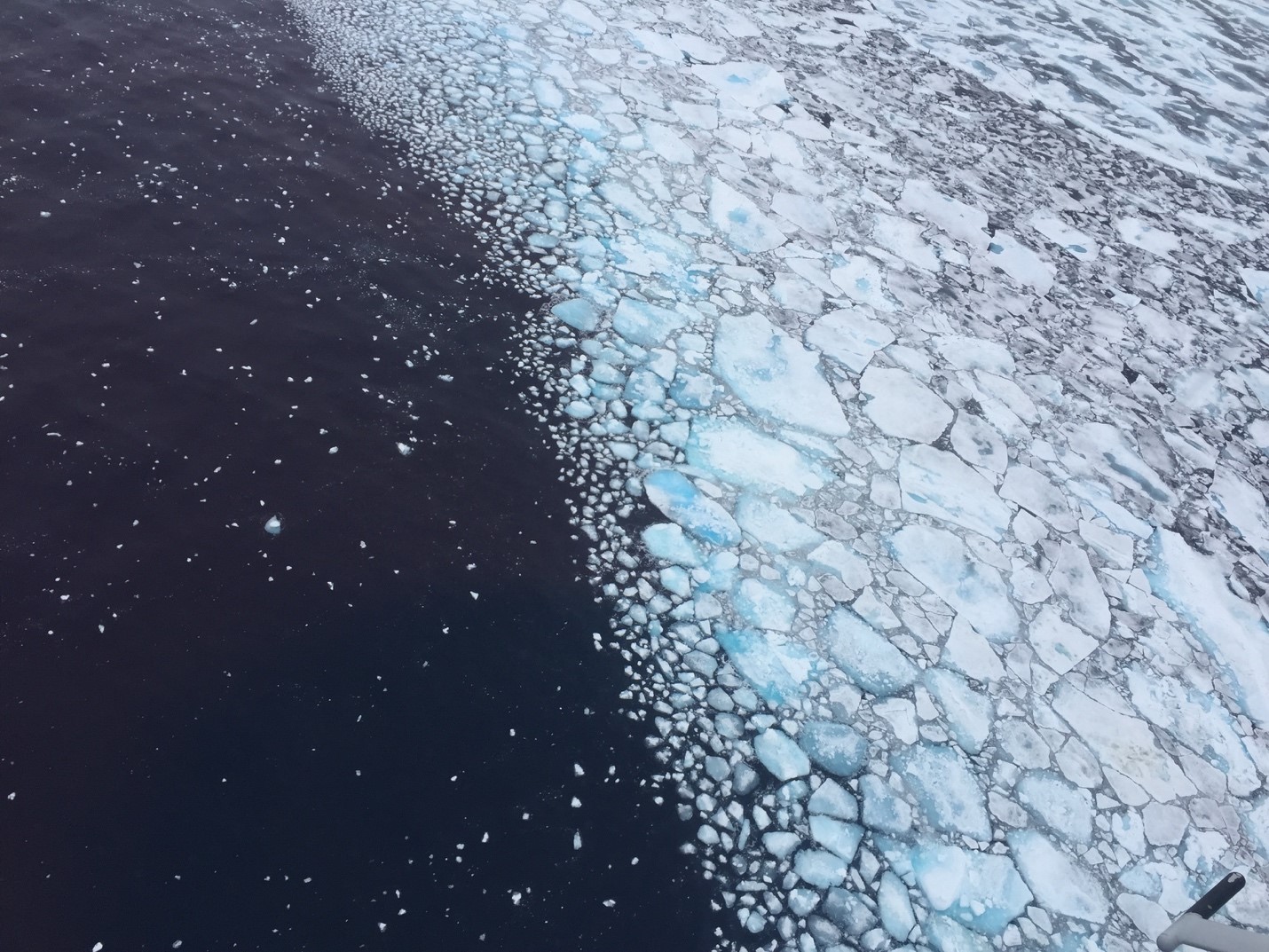As Arctic ice thins and melts, more of it will travel between nations — bringing pollution with it
In the next several decades, the ice could transport plastic and industrial pollution further in the Arctic Ocean.

As Arctic sea ice melts, broken pieces are carried by winds and currents between the ocean territories of the circumpolar nations. Future melt will move much more of that remaining ice — and move it more quickly, new research finds.
By the end of the century, the area of ice transported between nations’ territories will more than triple, and movements will take less than a year, compared to travel durations of up to six years at present, according to calculations in a study published in the journal Earth’s Future.
Ice that forms in Russian territory currently dominates that volume transported around the Arctic, but by the end of the century, the Central Arctic will join Russia as a major “exporter” of ice, the study found. And the more fragile and faster-melting ice of the future will not be able to travel as far; its travels are likely to be limited to movements between neighboring nations, the study found.
[A rising tide of plastic pollution in the Arctic is spurring international action]
Whether emissions continue at current rates or are cut significantly, the mid-century ice mobility will remain about the same, with ice moving at least twice as fast as it does now, the study found.
But after the middle of the century, conditions will diverge.
Under a high-emissions scenario, there will be so little summer ice that it will have a hard time getting to places it used to travel, said Patricia DeRepentigny of the University of Colorado, the study’s lead author.
“It just melts too fast,” she said. “We don’t see that as much in the low-emissions scenario because the Arctic doesn’t go ice-free every year in the low-emissions scenario.”
That led to a somewhat surprising result, DeRepentigny said: When it comes to the problem of mobile ice carrying possibly undesirable materials — such as industrial pollution or oil from spills — between Arctic nations, the high-emissions scenario has an unexpected silver lining.
“You always think of the high-emissions scenario as being the worst and something you want to avoid,” she said. But because a low-emissions scenario will preserve ice, “the potential for ice to be carrying in these things is greatly amplified,” she said. (The broader environmental threats to the region from a high-emissions scenario remain worse; it’s only the potential for ice to distribute marine pollution that is lowered in such a scenario.)
The study uses a widely accepted climate model that runs computer simulations to reconstruct past conditions and forecast future conditions.
Under “realistic” scenarios, the Arctic will likely become ice-free in summer by 2050, according to another recent study for which DeRepentigny is a co-author.
[New climate models predict ice-free Arctic summers by 2050]
Mobile ice can transport marine sediments and nutrients, which could be good for destination regions or at least benign, she said. But there are concerns about other materials that are swept around with moving ice — oil and plastics pollution, which float on the water’s surface and can be encased in ice that forms in winter and melts in summer.
With so much of the mobile ice coming from Russia, that could mean pollution from Russian industry will also become more mobile, she said.
“Think about oil spills there,” she said. And there are activities in the Russian Arctic that are still mysterious, things “that they’re not necessarily telling the whole world about,” she said.
Plastics pollution in the Arctic marine environment has emerged as a serious concern. The eight-nation Arctic Council has made action on the issue a priority. Under the current Icelandic chairmanship, the council plans to come up with recommendations for international best practices and solutions.
The council is also seeking to better understand how plastic moves in the Arctic. Its Protection fo the Arctic Marine Environment working group just completed a “Plastic in a Bottle” experiment that tracked a floating capsule that traveled 7,000 kilometers over 207 days from Iceland past Greenland to Scotland, where it washed up on a beach.
The relationship between Arctic sea ice and plastics is also a subject of new research.
A Dartmouth-University of Plymouth study published in 2014 cited Arctic warming and ice melt as a culprit. Microplastics previously locked up in ice are now being released, the study found.
A new study identifies summer ice melt and wastewater streams as sources of marine microplastics in waters off Svalbard. The timing of those plastics releases is unfortunate, says the study, by Swedish and Norwegian scientists and published in the journal Environment International. The release of plastic pieces coincides with the spring bloom at the edge of the ice that feeds marine organisms, putting those organisms at risk of ingesting plastic pollution with their natural food.